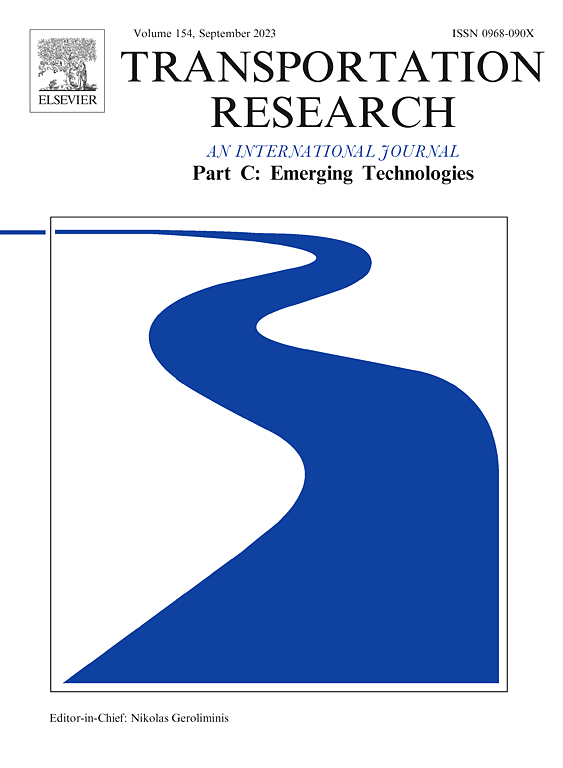The VCG pricing policy with unit reserve prices for ride-sourcing is 34-individual compatibility
IF 7.6
1区 工程技术
Q1 TRANSPORTATION SCIENCE & TECHNOLOGY
Transportation Research Part C-Emerging Technologies
Pub Date : 2025-02-01
DOI:10.1016/j.trc.2024.104991
引用次数: 0
Abstract
We consider a customized matching and pricing mechanism for ride-sourcing services in which drivers and riders disclose their willingness to accept (WTA) per unit distance and their willingness to pay (WTP) per unit distance, respectively. The platform then matches drivers and riders based on their reports to maximize the total social surplus. While this strategy is motivated to promote transparency, fair pricing, and participant satisfaction, it faces a particular challenge to ensure riders and drivers truthfully report their valuations, which are considered private information. To encourage truthful reports, we implement the Vickrey–Clarke–Groves pricing policy augmented with unit reserve prices, referred to as VCG-URP. For the riders, the reserve price is set as the minimum WTP per unit distance, while for the drivers, it is the maximum WTA per unit distance. We demonstrate that VCG-URP ensures that riders provide truthful valuations. However, it does not guarantee the same level of honesty from drivers in reporting their valuations. While drivers cannot enhance their utility by overstating their unit WTA, they may benefit from understating it. These theoretical results are confirmed by numerical experiments with several additional findings: (i) although the under-reporting strategy of the drivers theoretically has an opportunity to achieve a higher utility, it always leads to a decrease in expected utility over randomly generated matching scenarios; (ii) the introduction of reserve prices has larger impacts on riders than drivers and benefits the platform in excluding less profitable trips; and (iii) the performance of VCG-URP is reasonably robust towards the market density, while the VCG price is less applied when the market becomes sparse, mainly due to the loss of substitutability among participants. All these findings bring valuable insights into ride-sourcing services in practice.
求助全文
约1分钟内获得全文
求助全文
来源期刊
CiteScore
15.80
自引率
12.00%
发文量
332
审稿时长
64 days
期刊介绍:
Transportation Research: Part C (TR_C) is dedicated to showcasing high-quality, scholarly research that delves into the development, applications, and implications of transportation systems and emerging technologies. Our focus lies not solely on individual technologies, but rather on their broader implications for the planning, design, operation, control, maintenance, and rehabilitation of transportation systems, services, and components. In essence, the intellectual core of the journal revolves around the transportation aspect rather than the technology itself. We actively encourage the integration of quantitative methods from diverse fields such as operations research, control systems, complex networks, computer science, and artificial intelligence. Join us in exploring the intersection of transportation systems and emerging technologies to drive innovation and progress in the field.

 求助内容:
求助内容: 应助结果提醒方式:
应助结果提醒方式:


